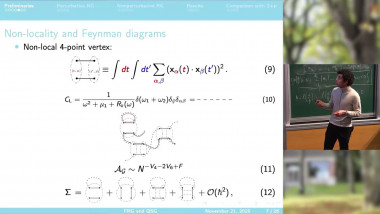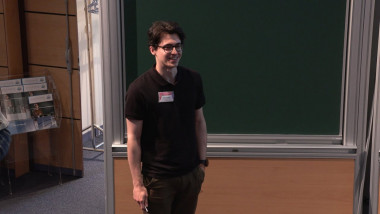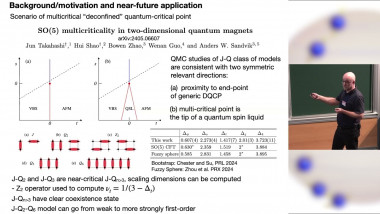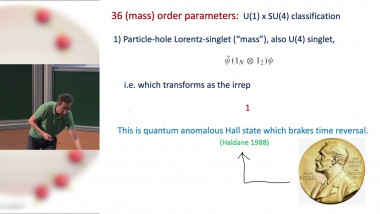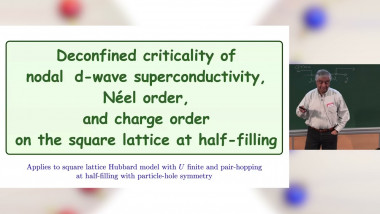Appears in collection : 2024 - T1 - Quantum many-body systems out-of-equilibrium
Series of two lectures with four excursions. Theory of (quasi) one-dimensional electronic systems attracts us thanks to its special facilities but also because of some specific curiosities. In these excursions we shall meet some examples of not quite expected relations, difficulties and even mistakes which one can pickup from the long history of this field. First excursion will descend to the contradictory story of Luttinger liquid with its curiosities in historical , personal and linguistic aspects. It will also introduce the once unattended role of so called chiral or Schwinger anomalies. Second excursion will meet the chiral anomalies as they appear already in simplest, MF or BCS types, models particularly at finite temperatures when normal excitations are present. The resulting effective Ginzburg-Landau theory will prove to be quite different from what is commonly expected. This approach is necessary to study space and space-time vortices in a symmetry broken state. Third excursion will undermine the common belief of the spin-charge separation which is seemingly endorsed by the bosonization and exact solutions. Actually, spin excitations must carry the electric current as it takes place for free fermions. The resolution comes from correct definition of current carrying states and current operators taking into account the band curvature. Forth excursion will lead to the early days when 1D models were studies to understand the phase diagram of real quasi-1D systems. We will see that, unlike the common beliefs, the 1D (g-ological) phase diagram based upon diverging power-law susceptibilities, does not want at all to reproduce itself when electrons acquire a bandwidth in interchain directions. The system falls to the Fermi-liquid regime unless the real or “imaginary" gaps appear from external symmetry lowering due to the crystal field of the magnetic field.
Watch part 1
